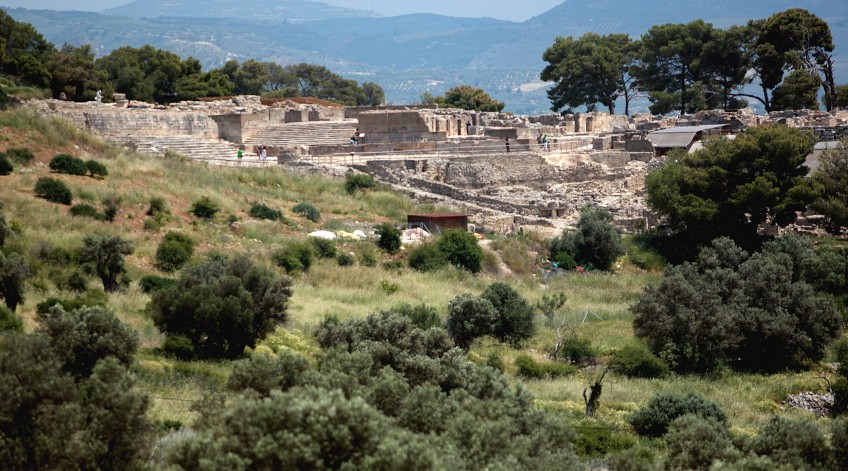ARCHAEOLOGICAL SITES
The archaeological site of Festos
The archaeologidal site of Phaistos is situated at a distance of 28 kilometres far from Agia Galini.
During the Minoan period Phaistos was one of the most important centres of this briliant civilisation of the 3rd and 2nd millennia b.C.; it was the most important and powerful city of Southern Crete.
The site was firstly inhabited in the Neolithic times, but it reaches its zenith in the 15th century b.C.; it is in this period that are built the briliant Palace and the city around it. The life of the Minoan city was short enough, as it was destroyed in the mid-15th century b.C. Although the city continues to exist during the Mycenean and the Geometric times, it has lost its glory and importants. Later, in the Archaic period a temple of Rhea is built at the southern part of the palace.
Hellenistic times are a period of flourshing for the city, which lasts until the 2nd century b.C., when it is conquered by the neighbouring powerful city of Gortyn(a). The glory of Phaistos is forgotten ever since; only a few traces of the Venetian period in the area around indicate that people continued to live there.
By the end of the 19th the Italian Archaeological Institute conducts excavations on the site, which last until the 1970s'. Apart from the excavations, it has been taken care to consolidate and restore the monument (not in the way Evans restored Knossos) and several parts were cover with a roof in order to protect the ruins.
During the tour of the site, the visitor can see several architectural complexes, first of all the palace itself which is considered as typical of the Minoan palatial architecture, both for the design and for the perfect construction. Ruins of both the older and the more recent palaces are visible. The palace is organised around a peristyle central courtyard, with store rooms at the West, the royal quartiers at the North and the workshops at the East. Western to the storehouses it is found the so-called "theatrical space" with the "procession streets", whereas below them are found the grain storehouses of the Old Palatial building.
At the Western propylaia, the visitor comes accross the most impressive entrance ever seen in a Minoan palace. The mobile finds of the site are housed and displayed in the Archaeological Museum of Heraklion.
The earlier palace was built at the beginning of the 2nd millennium b.C. and flourished until circa 1700 b.C., when it seems to have collapsed by an earthquake, along with the Knossos palaces of the same period. On the ruins of the older destroyed building a new one is constructed, muc more magnificent than the previous one. This building that is destroyed again, possibly by the Mycenean invadors. Following its destruction, it is abandonned and only some parts of it are transformed in private dwellings.
Extended parts of the Minoan an of the more recent city have been detected at the South and West of the palace, in the sites of Chalara and Aghia Fotini. Leaving the archaeological site, it is worth seeing the Venetian church of Aghios Georgios of Falandra, situated at the West of the area of the palace, at the left side of the road to Aghia Triada and Matala.
The visitor may find information material about the site in the entrance.

